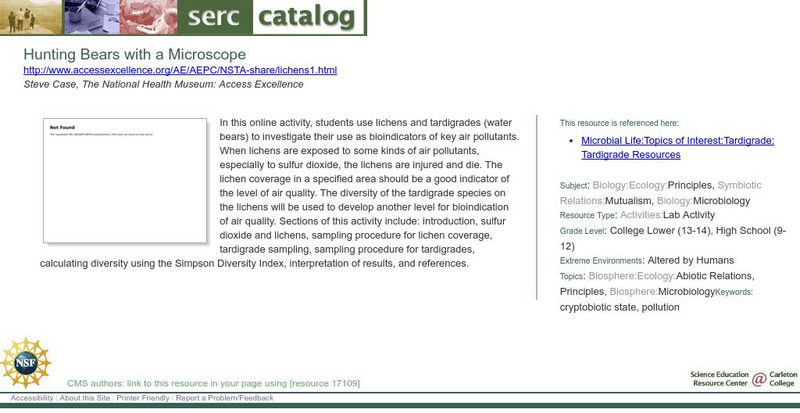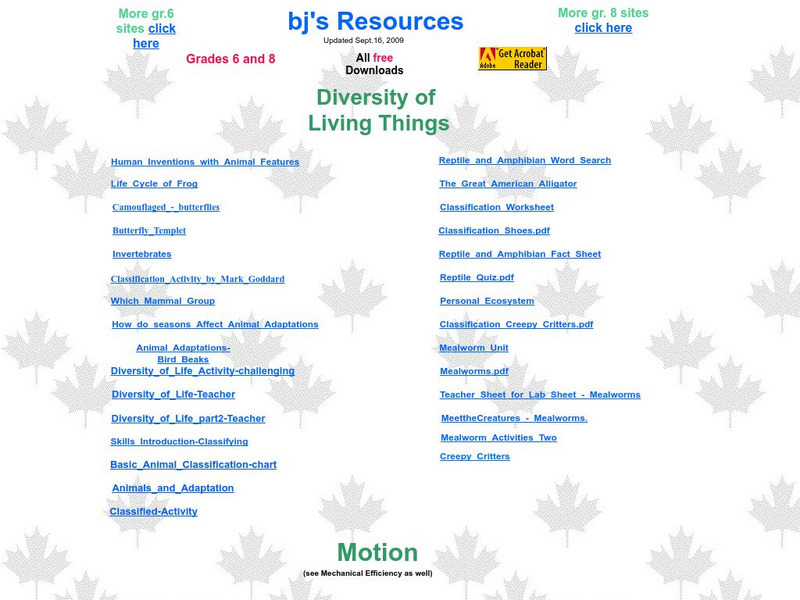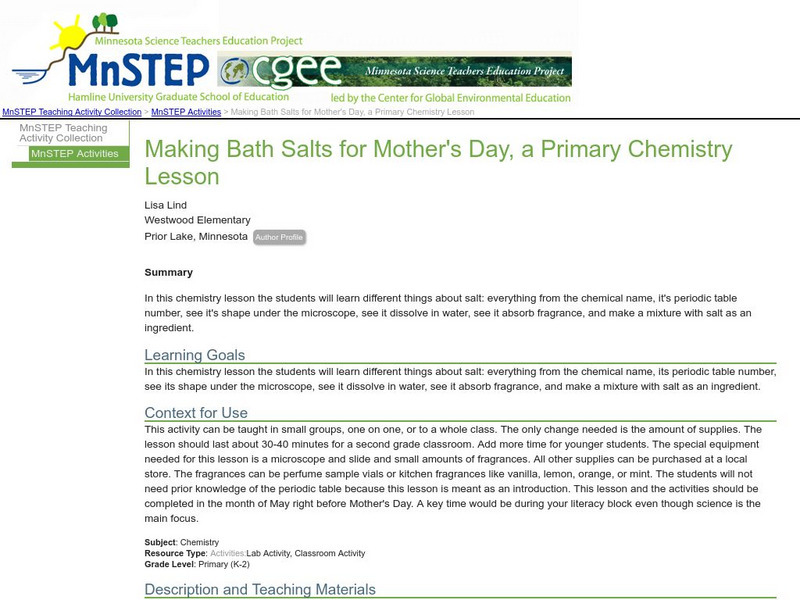Science Education Resource Center at Carleton College
Serc: Hunting Bears With a Microscope
In this study, students will use lichens and tardigrades (water bears) to investigate their use as bioindicators of key air pollutants.
Florida State University
Florida State University: Molecular Expressions: Basic Concepts in Optical Microscopy
This site explores the microscope in great detail. Content includes a focus on the microscope's basic functions (including a general diagram), the history of the microscope, each feature of the microscope, differing objectives,...
TeachEngineering
Teach Engineering: Grow Your Own Algae!
Students discover how tiny microscopic plants can remove nutrients from polluted water. They also learn how to engineer a system to remove pollutants faster and faster by changing the environment for the algae.
My Science Site
Pond Water Plants and Animals [Pdf]
This resource depicts some pond water plants and animals one might happen to spot while peering through their microscope lense. This resource is in PDF form; requires Adobe Reader.
My Science Site
Life Systems: Cells, Tissues, Organs
Extensive site for teachers provides some helpful resources that pertain to plant and animal cells. Includes a microscope diagram as well as plant, animal and pond labs. Also contains links to structures and mechanisms, matter and...
Thomas Jefferson National Accelerator Facility
Jefferson Lab: Reading Comprehension Passages
Read and fill in the blanks of science passages which range from easy to very hard. Each blank has a dropdown menu with choices. When you finish, click CHECK MY ANSWERS. If you pick a wrong answer, the right answer will be displayed...
Middle School Science
Protist Lab
In this concise lab exercise, you will examine protists under the microscope, see examples of different protist types, and compare modes of locomotion.
Science Education Resource Center at Carleton College
Serc: Making Bath Salts for Mother's Day, a Primary Chemistry Lesson
What do you know about salt? In this chemistry instructional activity, students will learn different things about salt: the chemical name, it's periodic table number, it's shape under the microscope, how it dissolves in water, and how to...
Library of Congress
Loc: What in the World Is That?
Can you match the picture to the correct invention? Read about these inventions and the importance of them. Also included are related sites to find further information about each invention.
My Science Site
My Science Site: Cell Center Activities [Pdf]
Site provides six possible center activities for teachers to use to engage students in the study of cells.



![Pond Water Plants and Animals [Pdf] Graphic Pond Water Plants and Animals [Pdf] Graphic](https://d15y2dacu3jp90.cloudfront.net/images/attachment_defaults/resource/large/FPO-knovation.png)



